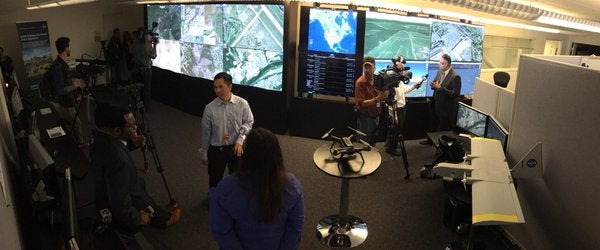NASA Is Making A Drone-Traffic Control System
It already successfully tracked 24 drones flying simultaneously across 6 states

We have no flight-tracking system for the lower sky. There are rules and charts for keeping track of larger aircraft that carry human passengers and are piloted by humans onboard, but drones are small and fly low, which means we have to trust in drone pilot good behavior to keep drones away from risky places, like airports. Small drones, unlike other aircraft, don’t broadcast their location, so tracking them in the sky is tricky. That’s why the FAA is working with NASA to come up with an Unmanned Aerial System Traffic Management system. Or, essentially, air traffic control for drones.
Earlier today, NASA tested the system at six different FAA test sites. Those test sites are quite the geographic spread: Fairbanks, Alaska; Grand Forks, North Dakota; Reno, Nevada; Rome, New York; Blacksburg, Virginia; Bushwood, Maryland; and Corpus Christi, Texas. NASA first tested the system at just one site last fall. From that test:
Today, they tested that same system, across six states and with 24 drones. They needed just 16 to work to count it as a success.
With 24 flying, the test exceeded expectations. Next steps for NASA include testing the new system with drones flying beyond a pilot’s line of sight, and figuring out how to track drones that aren’t part of the system. We still have a long way to go before this technology can keep track of an increasingly busy lower sky, but it’s a pretty good start.
